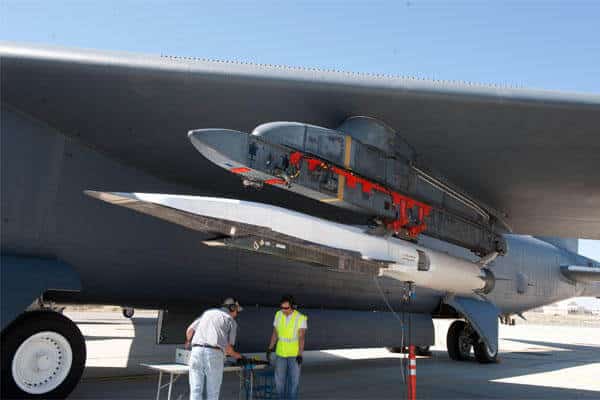When in March 2018, Vladimir Putin announced that the Kinzhal hypersonic airborne ballistic missile would soon enter service, all Western armed forces understood that this new technology would quickly become an operational imperative, and that in this area, they had left it to the Russia, but also to China, which the following year presented its own DF17 hypersonic missile, a far too large advance. If the Europeans, as usual, reacted with the speed of a sea cucumber, the Japanese, Australians, South Koreans and above all the United States, reacted with speed and determination, quickly implementing programs aimed at acquiring this type of armament as quickly as possible. One of the main American programs in this field is the HAWC program for Hypersonic Air-breathing Weapon Concept, a hypersonic cruise missile powered by an air-breathing engine of the Scramjet type and developed by DARPA, the research and development agency of the Pentagon.
Barely three years after its launch, the HAWC program has made considerable progress. Already last September, DARPA announced the first hypersonic flight of the model developed by Raytheon and Northrop Grumman, and that most of the initial objectives had been achieved during this flight, without it being known whether it was actually the first flight of this model, nor the performance achieved. DARPA was a bit more verbose in a press release yesterday., announcing the success of a hypersonic flight of the second model of cruise missile, developed this time by Lockheed-Martin. We thus learn that the missile would have exceeded the speed of Mach 5, defined as the hypersonic threshold, the altitude of 65.000 feet and that it flew over 300 miles, or 560 km. We also learn that the missile was initially propelled by a traditional powder booster, allowing it to reach the speed required for the Scramjet developed by Aerojet Rocketdyne to take over and propel the missile beyond Mach 5.

The use of a Scramjet, rather than a solid rocket booster as for the Kinzhal missile, presents many advantages, in particular because the oxidizer necessary for the thermal reaction producing the thrust is provided by atmospheric air. Thus, the Scramjet is much lighter, with identical capacity, than a powder engine which carries fuel and oxidizer, offering greater potential range and greater flexibility of use and maneuver. The United States had previously invested in this type of technology, with the X-51A Waverider demonstrator tested in the early 2010s. However, the new scramjet developed by Aerojet Rocketdyne, which had already developed the X-51 engine, is two times lighter and more efficient than the prototype, offering much more serious operational application opportunities than before.

75% of this article remains to read,
Subscribe to access it!
The Classic subscriptions provide access to
articles in their full version, and without advertising,
from 6,90 €.
Newsletter subscription
Register for the Meta-Defense Newsletter to receive the
latest fashion articles daily or weekly


[…] […]